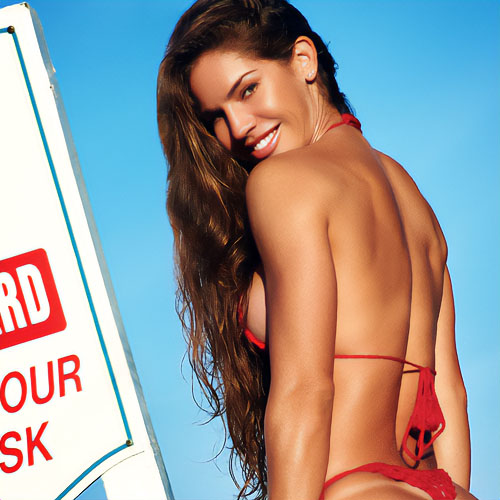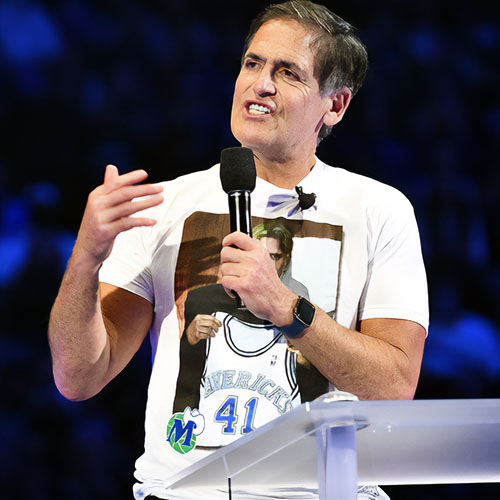“When a close friend of his overdosed and died a few years ago, it shook him into action.”
High Sobriety Founder Joe Schrank
Joe Schrank has been sober for two decades, but he’s not annoying about it. In fact, he may be the only social worker in California who supports the use of pot without ever smoking it himself. A tattooed, six-foot-five former USC football player, Schrank graduated with a master’s degree in clinical social work from the University of Illinois, then got hired as a residential therapist at Promises, a Malibu detox center known for hosting addicted celebrities such as Charlie Sheen, Robert Downey Jr., and Lindsey Lohan. Later, Schrank moved to New York, founded the city’s first sober living home, co-founded the addiction and recovery website The Fix, and worked with local authorities to establish the first recovery program in an area high school.
The focus of Schrank’s graduate work was depression and substance abuse in college athletes, and here he drew on his own struggles. Son of an alcoholic Vietnam vet, Schrank turned to the bottle himself as a young man, “pouring alcohol on his depression,” as he put it to me. He responded well to Alcoholics Anonymous but watched others around him try AA and repeatedly fail to get sober. When a close friend of his overdosed and died a few years ago, it shook him into action. In 2017, Schrank founded High Sobriety in LA’s Culver City neighborhood, the first rehab facility to make cannabis a core element of its treatment plan for those addicted to alcohol and/ or opiates.
We caught up with Schrank to talk about High Sobriety and why he thinks cannabis could be part of the answer to America’s addiction problem.
What drove you to create an alternative to AA?
I think AA is a great organization for many people. I don’t have an objection to it. I have an objection to the idea that it’s the only solution to a drug-abuse issue. With 22 million people in need of some kind of chemical dependency treatment, labeling all people constitutionally incapable with a need to pray-it’s just not logical. lt doesn’t address the problem. The recovery rates haven’t moved. Think of dentistry and the vast improvements in the last 15 years. Why is it that chemical dependency treatment hasn’t changed and, some might argue, is getting worse? lf someone has a drug problem and the only thing they are told is, “You have to go to AA,” and that’s wrong. There are other options like medication, or what I do at High Sobriety, which is harm reduction.
How does harm reduction guide the High Sobriety approach?
My vision of harm reduction is to create enough room for an individual to make decisions about their own life-to respect their right to self-determine without judgment. In other words, “You want to smoke pot? Okay. it’s not my business:” Some people give up cannabis and move to total abstinence, but you don’t have the option to do that if you are dead. This is where I often get myself into trouble, but I don’t believe that total abstinence is the best solution for everyone with drug-use issues.
For some people, no drug use as the only option for a problem is wrong. These young guys who have trauma-you kind of want them baked. They have a tendency for violence and other issues that are helped by drug use. We all benefit from drug use-even if it’s simply aspirin when you have a cold. The idea of a drug-free America is fantasy. Abstinence-only drug education is just as ineffective as abstinence-only sex education.
Why does weed have attraction as a rehab tool?
[I like cannabis] because there is no lethal dose. The truth of the matter is that if you look at the data analysis, fully-formed adults are pretty safe using cannabis. As a social worker, my interest is in the safety of the individual, the potential harm to self or others. Dangers reduce when people replace their drug use with only cannabis: sexual assault, violence between partners, emergency room visits from accidents, and so on. Do you want to give people a loaded gun or a nerf sword? I think they are safer with the nerf sword.
But some people don’t like pot, or get paranoid smoking it. There’s a reason they prefer Percocet.
At High Sobriety, we don’t believe that everyone is a viable candidate for harm-reduction cannabis replacement. We don’t have the magical solution to an addiction problem. What I learned about cannabis is that the strain matters, and you need to consult with someone who knows their stuff, like a doctor. I don’t know this stuff, which is why we have people on staff who do. The route of admission matters, whether it’s an edible, a vape, or flower.
Weed also isn’t what it was 40 years ago. It’s strong as hell. My initial idea was naive-“No one dies from weed, so go smoke weed instead’.’ Part of it was the enticement to get opioid addicts treatment. Many people are shocked to find out they can smoke weed in our rehab. I give them all the parameters: You have to see the doctor, the doctor has to qualify you, the pot must be dispensed from a reputable dispensary. It’s not just a bunch of people sitting around smoking weed. For example, we had a kid in here with Crohn’s disease. The doctor got him off opioids and onto a pretty low-THC strain of cannabis that helps the kid with his pain. Great. I believe he is better off using that pot than opioid painkillers.
We are still on a learning curve, but what I do know from years of doing this is that when someone leaves a sober-living facility, it’s eyebrow raising. Be careful. Go to meetings. All this sort of stuff. We don’t know what that person is going to do once they leave sober living. A portion of them return to active using and die. That’s not the case if we have supported them into limiting their drug use to cannabis. A 22-year-old kid-and we get a lot of those-who is an injectable heroin user, then six months later is a medicinally dispensed cannabis user? Weil, he may give up cannabis at age 25.
I can talk to a 22-year-old cannabis user about returning to school, military service, or their drama with their relationship, but you can’t talk to a heroin user. It’s very hard because all you ever talk about is for them to stop using heroin. I had one kid tell me that his girlfriend didn’t like the weed-smoking. Well, do you like the girl or the weed more? Point being, when that kid [arrived] there was no girlfriend. All he had were a bunch of infected injection sites, smelled like a dead hooker, and was nodding off during conversations. Look, you can clean people up. I think people can have functional lives as cannabis users.
In AA, success is being substance-free and happy. What is success for High Sobriety patients?
Our metric of success is a bunch of different things: the ability to hold employment, civic responsibility, returning to school, disentangling from the legal system. Our metric of success is not a clean or dirty urine screen. That is a data point, but it doesn’t tell you the whole story about somebody’s life. We know that our [patients] will test positive for THC. lf you look at a 30-panel urine screen and the only screen that is positive is THC-diazepam is negative, methamphetamines are negative, opiates are negative-1 think that’s awesome. AA and 99 percent of other rehabs out there would see that as a total failure.
At around $42,000 a month out of pocket, without insurance, the program’s not exactly cheap.
With insurance, we can get out-of-pocket costs down to around $5,000. Look, as a socialist I hate the class system of drug use in America. I don’t like that we only get the white kids from Brentwood and Connecticut. It’s not that I don’t like the white kids, it’s that they are not the only people with [addiction] problems. I don’t know how to diversify this issue besides winning the lottery. My proposed solution is taxing alcohol at an appropriate rate and designating that money toward treatment and recovery options for people. The state of California has not raised taxes on alcohol in 25 years. Really? Just do a quarter a six-pack. Who does that hurt?
Imagine the uproar that would cause. It’s a pretty radical idea.
The recovery community is not organized as a voting constituency, right? As a guy who hasn’t had a drink in 20 years, why do I have to pay for puke on Venice Boulevard and broken glass and all the mess that alcohol causes? The consumer should pay it. There should be a user tax for damage, just like there is a tax on your car for the environmental effect. The user pays. You don’t like it? Don’t drink it.
Why do you think addiction recovery hasn’t advanced like other fields of medicine?
Think about it this way: We have a housewife from Brentwood in a bubble-gum pink track suit who takes pills and a kid with a skateboard and his jeans below his ass and we are telling them they require the exact same treatment for their addictions. Ten years ago, there was only ovarian cancer-now we have discovered subsets of ovarian cancer. We need to have subsets of addiction and addiction treatment if we are going to address our national problem. Culturally, we have never seen anything like the current opiate crisis, which means the solution isn’t going to be like anything we’ve seen before either.
And cannabis could be part of that solution?
My thing as a social worker-and as a follower of Jesuit philosophy, is that people have the right to self-determine. We’re there to serve them. I have an obligation, from an ethical perspective, to provide options for people. Same people go to AA and do really well. Not everyone does. Only five percent of people achieve total abstinence and do well with that. You want to join a system where you have a five percent success rate? Go ahead. You may be in that percentage.
High Sobriety is harm reduction, and harm reduction is all around us, whether it’s a bike helmet, the airbag in your car, or a condom. I think that cannabis is harm reduction for addicts and can be successful. Think about it: 88,000 Americans drink themselves to death per year, while 1,800 college kids die from alcohol-related causes. No one smokes weed to death. All drug use has risk. Five hundred people a year overdose and die from Tylenol. I don’t think that cannabis is blameless, holy, or without risk. However, I think the risk is mitigated. It’s pretty low. I like your odds of getting through the evening after you’ve smoked a joint compared to drinking half a bottle of vodka.
Originally published this month in 2018, we’re bringing back some fine work by one of our favorite former editors. People move on in life, but that does not mean those of us left behind cannot celebrate her insights. Joe Schrank still excels in his service as well, and we continue to marvel at his success. We also still lament that it costs big money to help with a sickness that hits the poor as significantly as it does. Joe’s whole “with insurance” angle hits a broader social issue as well. Good thing we try to avoid broader social issues.




















for 28 years, AA has worked for me!